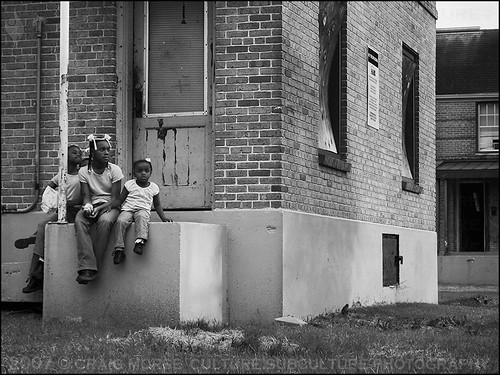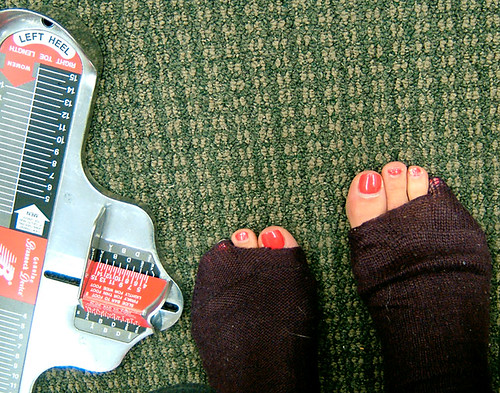Last week I spent a day with traditional school teachers from my county at a county-wide in-service. We heard
2010 National Teacher of the Year,
Sarah Brown Wessling talk about student-centered classroom practices, exchanged ideas with colleagues who teach in our subject area, and in general had a day to re-charge. At these in-services, I rarely feel like I fit in anywhere because my alternative high school program is so different from a traditional classroom. In years past, I have not felt comfortable about sharing what happens in my classroom because of those differences-- it's scary to be the only alternative educator in a room full of hundreds of traditional educators! This time was different though. I wasn't afraid to share. I shared some ideas and details about what happens in my classroom and was shocked by the fact that many of the colleagues I have worked with for a decade or more have no idea what goes on in our alternative high school program. I also read
this post by Larry Cuban, who recommends that teachers speak out about their practice. So here it is... a play by play of a typical day in my classroom.
 |
| Students working independently: yes, the floor is a workspace! |
Students arrive at 9:00 AM. (Research suggests that adolescents are more capable of attending regularly and being successful with a later school start time. See this article from the Sleep Foundation for links to research studies.)
9:00AM to 10:00 AM and 10:10 AM to 11:10 AM Independent/self-guided study time. Students choose what subject they want to work on and what course they want to work on. They have options not only in what course they want to study, but how they study it. They can use a traditional textbook to read, answer questions, take quizzes and tests. They can use an Internet-based curriculum (this year we are trying
e2020.) They can design their own research project. Currently four students are working to create an aquatic ecosystem in a 29-gallon aquarium tank with the help of a community college Biology professor. (
I recently read this post about the need for traditional classrooms to offer Independent Work Time and found it very interesting.)
While they work, my aide and I are available to help them one-on-one if they need it. Kids can listen to music during class if it helps them focus, and they are allowed to eat/drink (as long as they clean up after themselves.) They work at their own pace, so if they miss a day of school they come back and pick up exactly where they left off. They each have a goal regarding work completion for a nine-week period of time. They each know how much work it will take to complete a course from the first day. They can discuss with us a personalized plan for progress or decide for themselves how much work should be done each day in order to complete a class.
In any given hour, there are kids working on English, Biology, Consumer Math, World History, or Health. It is rare that two kids are working on the same thing at the same time. Most kids work on the same subject every day during Independent Work time so that they don't have to switch gears from Math to English. They can focus on one subject until it's done. They don't have to switch gears, but my aide and I do. We bounce from student to student to help with every subject area in a short period of time. There is never a dull moment!
In between 1-hour class periods, there is a 10-minute break where kids can text, get on Facebook, walk around, hacky-sack in the yard or just hang out.
11:20 - 12:20 Whole group instruction. This is optional--students who do not feel comfortable working in a group setting do not have to participate; they can continue working on Independent Study credit. Each 9-weeks I look to see what subject-area kids are lacking credit in, and plan a course to help them. The curriculum can be challenging for me because I am a certified Language Arts teacher and kids often need credit in classes like U.S. Government or Math. In those cases, I must choose to either use our district-approved textbook to present curriculum straight from the book (I read the chapter to them, we discuss the questions together, they take the test)
or I must get my curriculum approved by collaborating with a
Highly Qualified Teacher. I can also use approved curriculum, but change the way it is presented. For example, this quarter we are working on an Algebra class together. Instead of teaching Algebra traditionally, we are learning traditional Algebraic concepts with Algebra Tiles. It is a hands-on way to illustrate algebraic thinking. Students are working at their own pace through the algebra curriculum and can help each other or wait for me to help them. I spend all hour walking around my classroom, looking over shoulders to check for understanding and helping kids who need help.
12:20 - 12:40 Closed-campus lunch. School lunch is delivered from the cafeteria at the traditional high school in town. Kids eat, surf the 'net, get on Facebook, throw a football in the yard, and hang out.
12:40 - 1:40 Another hour of optional whole-group instruction. This quarter we are reading the John Grisham book
A Time to Kill together. Everyone takes turns reading aloud, but no one has to read more than they are comfortable reading. They must read at least one sentence, but can read as many pages as they want (the goal is to improve their oral literacy skills, not give them panic attacks!) We will analyze characters, talk about the criminal justice system, and examine race issues. They will complete reading comprehension quizzes and finish the course with a self-designed project of some sort that relates to the book. The options are endless for their project, they just need to have a vision of what it will be and let me know about that vision before they start working on it. Projects will be presented to the class when they are completed. In this class, my role as a teacher is to pick the book and come up with the reading comprehension questions. On an every day basis, I am just like the kids: I take my turn reading aloud, chip in on the discussions, and help if someone gets stuck on word pronunciation.
 |
| Our ceiling is filled w/student art |
 |
| Football in the yard |
1:50 - 2:50 Activity hour. We don't have a gym in our building so this is the time of day we use for adapted PE, Art, and social interaction time. When the weather is nice we either walk to the local park to play basketball, frisbee golf, or to walk the track. When it's not so nice we play board games, card games or do art projects. We also use this time for community service projects: our annual Thanksgiving Feast for the Community, home-made valentines for the residents of our local nursing home, and raking leaves or shoveling snow for the home-bound are some of our regular projects.
We dismiss at 2:50. We do not give out any homework
(Interesting post here about the homework debate.) When a student leaves for the day, they leave school behind them and go on to their lives outside of school--for many this includes working a job, taking care of children (their own or younger siblings), and a lot of responsibility. Similarly, I work hard to leave my work at work. It is nice as an adult to be able to come home and devote my time to my family; why not give that same respect for personal time to my students?
I take the time to interact regularly with my students. They are my friends on Facebook, they have my cell phone number, and can contact me in any way they feel comfortable doing so. I send a weekly letter home to parents along with an hour-by-hour attendance report and a handwritten note about their student's progress. Many parents are also Facebook friends, have my cell number, and can text or email me any time (some of them are probably reading this blog right now! THANK YOU for your continued support! ) We collaborate as much as possible to help kids graduate from high school.
Not every alternative h.s. program is the same as mine. Some are much bigger; some are full-fledged alternative schools with a full faculty; some are even smaller than mine and exist as a "school within a school." Some things all alternative schools should have in common are: a student-centered approach to teaching and learning, use of a wide variety of teaching and learning strategies, community involvement, and most importantly an emphasis on building relationships with students.
I hope you have a better idea about what alternative high school programs are all about. We actually do more than I mentioned in this post (job shadows, worksite tours, college visits, mediation, counseling, etc.) but this gives you a good idea of what a typical day looks like.
Feel free to ask questions or offer tips on how you think we can improve!

















